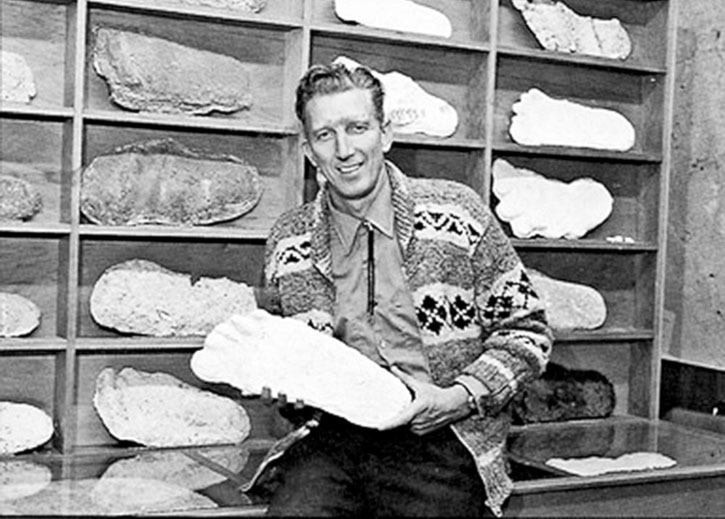Agassiz and Harrison Hot Springs lost one of its former mayors, sasquatch hunters and Lions club founder last week.
John Willison Green died on May 28 in Chilliwack, at the age of 89, after what his children described as a long and varied life.
His passion for writing brought him, his wife of more than 60 years named June, and five children to Agassiz and then Harrison in 1954, after purchasing the Agassiz-Harrison Advance newspaper.
Prior to moving to town, Green graduated from Columbia University in New York with an M.A. in Journalism, and he worked for the Toronto Globe and Mail, the Vancouver Province, and the Victoria Colonist.
As both owner and editor of The Advance, Green learned to use the Linotype machine and printing presses.
Shortly after moving, Green became intrigued by the mysterious sasquatch after the Village of Harrison Hot Springs proposed the idea of a “sasquatch hunt, in 1958 as a B.C. Centennial project.
The publicity sparked by the town’s request soon produced reports about large fresh footprints sighted in the forests of northern California.
Green couldn’t fight the temptation to investigate, so he took a look for himself.
Along the way, he met many sasquatch and Bigfoot hunters, such as Rene Dahinden and Bob Titmus, as well as Roger Patterson and Bob Gimlin – who made the only realistic film of a Bigfoot.
Green took a reporter-savvy approach to his interest in the sasquatch, and interviewed others who reported sightings, travelled to sighting locations, and made casts of footprints.
Finally in 1968, with plenty of first-hand accounts and his own documenting, Green sat down at a typewriter  and wrote his first self-published book, On the Track of the Sasquatch, which was followed in 1972 by a second volume, Year of the Sasquatch, and then The Sasquatch File.
and wrote his first self-published book, On the Track of the Sasquatch, which was followed in 1972 by a second volume, Year of the Sasquatch, and then The Sasquatch File.
Local resident Morgan Virteau still remembers the day his dad gave him a copy of Green’s first book when he was only five or six years old, sparking his own life-long interest in sasquatch.
“[I was] a little young for such a book, but I would go and re-read it over the years,” Virteau said.
The sasquatch enthusiast added that he was always fascinated by Green’s devotion to his research.
“The more I read the more I realized how much respect he had in both the local and general sasquatch communities,” Virteau said. “He was a skeptic when there should be skepticism.
“He was a realist and that made his thoughts on sasquatch all the more intriguing for me.”
As the popularity of his books grew, Green sold The Advance and became a full-time author with some supplemental editing work at the Hope Standard.
Later he added new reports and compiled a definitive text on Bigfoot called Sasquatch, The Apes Among Us.
In 2011, the Sasquatch Summit of Bigfoot researchers was held in Harrison, where Green was the guest of honour, and admirers came from around the world to salute his work.
Over the years, he gave many interviews and participated in documentaries. Above all he was generous with his information, and his database of sightings can now be found on the Internet.
Green’s devotion to investigating sasquatch was only one piece of who he was.
 He was a man of many trades, and indulged in hikes, playing with his 13 grandchildren and 12 great-grandchildren, and spending time near bodies of water – either building boats or on beaches.
He was a man of many trades, and indulged in hikes, playing with his 13 grandchildren and 12 great-grandchildren, and spending time near bodies of water – either building boats or on beaches.
In fact, as a teen, Green started building large model boats, eventually graduating to building a 14-foot racing dinghy he made out of fibreglass, which at that time was a new and revolutionary material for boat building. His innovative design is now called the boat bubble.
He was also a councillor on Harrison Hot Springs Village Council, serving as mayor for two years.
While on council he initiated the building of the beach and lagoon. Green also brought the International Sand Sculpture competition to Harrison Beach, of which the sculptures would attract beach-goers and tourists to the area even after the competition was finished.
As a history preservation activist, along with Wes Johnson and others, Green worked tirelessly to have the Kilby Historic Museum in Harrison Mills declared a historical site by the province, and he served as president of the museum society for a decade.
He also researched and wrote some of the history of the Agassiz-Harrison area for the historical society, which can serve as another reminder of Green’s interest in documenting for many years to come.
For those interested in sharing their condolences and memories of Green, visit legacy.com.
